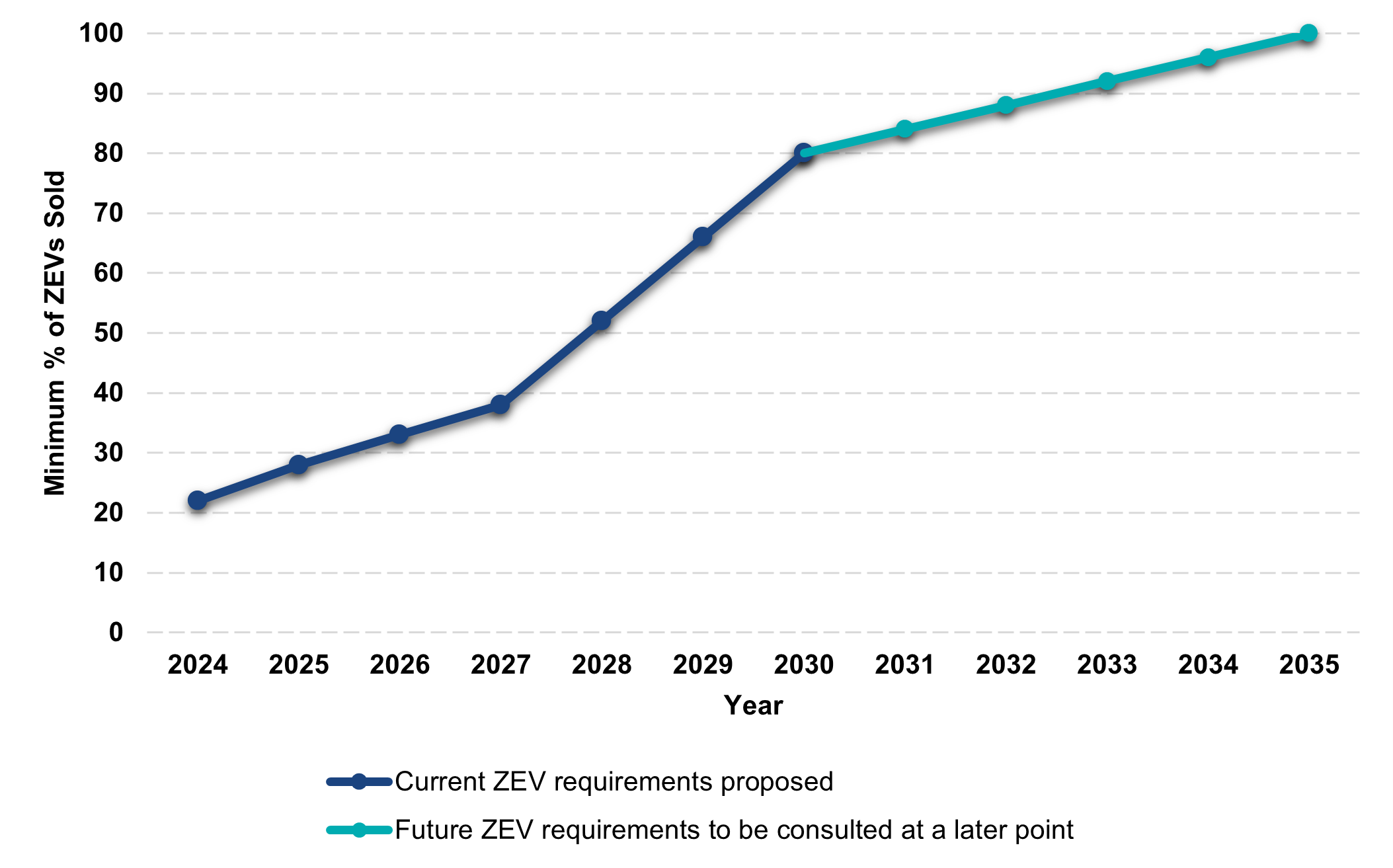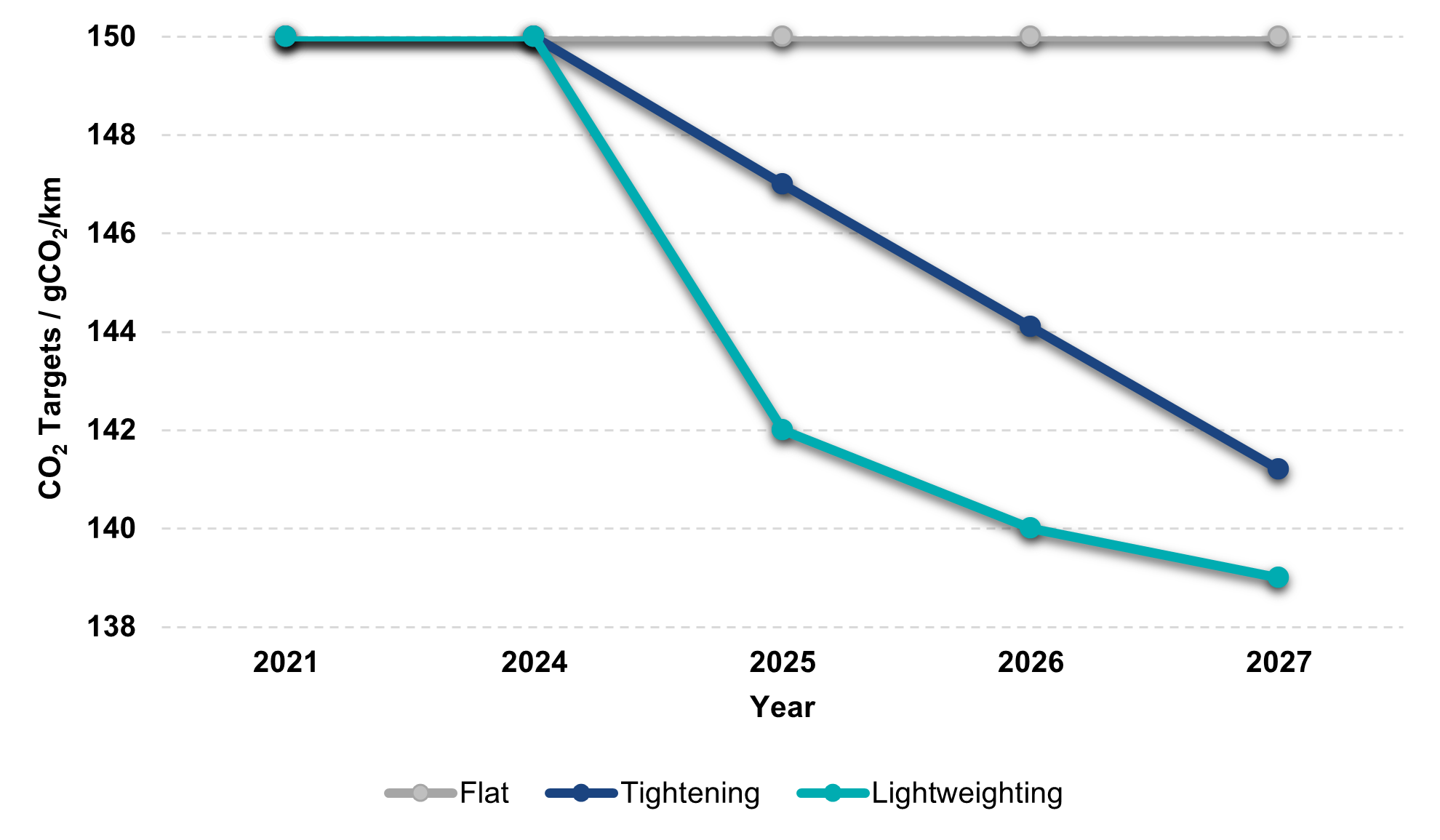
As the UK Government proposes measures to increase zero emission vehicle sales, we look at what this means for the transport sector and seek your views to the Department for Transport's consultation.
Join other savvy professionals just like you at CIHT. We are committed to fulfilling your professional development needs throughout your career
The transport sector is the largest contributor to greenhouse gas emissions in the UK. Cars and vans alone were responsible for 18% of the UK’s total domestic greenhouse gas emissions in 2021. To alleviate this problem, the UK government are pushing towards zero emission vehicles (ZEVs) i.e., electric vehicles and hydrogen fuel cell vehicles. In a current consultation, the Department for Transport are proposing a new ZEV mandate which looks to ensure the phase out of petrol and diesel cars (non-ZEVS) by 2035. In this article we will explore exactly what the ZEV mandate consists of, what this means to the transport sector, and how you can give your opinion on what's been proposed.
We need a balanced approach to road use that builds infrastructure that is safe, sustainable, and accessible for all road users, including motorists, pedestrians, cyclists, and public transport users.
As we prepare our response to the ZEV mandate consultation, we are looking for CIHT members’ views on whether you think this approach is suitable and will progress the transport industry towards Net Zero.
Please contact the CIHT Policy & Technical team at technical@ciht.org.uk if you would like to put forward your views.
The proposed ZEV mandate is the next steppingstone in a long line of laws and policies inching the UK closer to the goal of Net Zero greenhouse gas emissions. In relation to ZEVs these include:
2008: The Climate Change Act was passed, which set a legally binding target of reducing greenhouse gas emissions by at least 80% by 2050 compared to 1990 levels. The Act also established the Committee on Climate Change, whose role is to provide independent advice on meeting carbon budgets and preparing for climate change, as well as monitoring current UK government efforts. They deliver annual reports on the progress made by the UK government, with the latest one warning that we are still not doing enough to meet emissions targets.
2017: The UK government launched the Clean Growth Strategy, which set out a vision for accelerating the shift to low carbon transport, including ending the sale of new conventional petrol and diesel cars and vans by 2040.
2018: The UK government introduced the Road to Zero strategy, which set a target for at least 50% of new cars to be ultra-low-emission by 2030 and for all new cars to be zero emission by 2040.
2019: The Committee on Climate Change recommended that the UK set a net-zero greenhouse gas emissions target by 2050. The UK government subsequently passed legislation committing the UK to this target, making it the first major economy to do so.
2020: The UK government brought forward its target to end the sale of new petrol and diesel cars and vans by 2030, with all new cars and vans being fully zero emission from 2035.
2021: The UK government published its Net Zero Strategy, which sets out a roadmap for achieving the net zero target, including plans to introduce a ZEV mandate setting targets for a percentage of manufacturers’ new car and van sales to be zero emission each year from 2024.
The UK government have now acted on this plan by recently publishing their proposed ZEV mandate, which is currently open to consultation.
To meet the target of all new vehicles being zero emission by 2035, the UK government is proposing a policy framework that requires manufacturers to sell increasingly more ZEVs, year on year, from 2024 to 2035. This builds on the increasing number of ZEV sales already seen in the UK, (12% of new cars sold in 2021 were zero emission).
The current ZEV mandate only covers the period from 2024-2030, with the requirements for 2030-2035 to be reviewed and consulted on at a later point.
Although the 'ZEV umbrella' covers both hydrogen fuel cell vehicles and electric vehicles, there are far more electric vehicles on the road in the UK.
This suggests that as manufactures attempt to meet the proposed ZEV mandate, it will be largely new electric vehicles that we see entering the market, not hydrogen vehicles.

This new mandate could potentially go some way to solving the commonly referred to ‘chicken and egg’ problem, where consumers are reluctant to buy an electric vehicle without evidence of a reliable charging network, but, building a charging network is dependent on the increasing number of electric vehicles on the road, and car manufacturers are reluctant to build electric vehicles in advance of proven demand.
By phasing out petrol and diesel cars the UK government believes that this will create assurance to chargepoint operators that electric vehicle uptake will continue to increase in the UK.
Each year, car and van manufacturers will receive ‘allowances’ which essentially dictate how many non-ZEV vehicles they can sell in a year.
Allowances will be individual to each manufacturer and based on two factors:
The UK government are proposing that manufacturers could be able to purchase allowances from other manufacturers or use allowances from past and future years during the initial stage of the policy.
Manufacturers will also earn ‘credits’ for each ZEV sold, deployed to car clubs or produced as wheelchair accessible vehicles.
These credits can be used to offset the number of non-ZEVs sold to keep manufacturers within their allowance.
If manufacturers exceed the number of non-ZEVs allocated in their allowances, they must pay a fine to the UK government. The proposal suggests payments of £15,000 per non-ZEV car and £18,000 per non-ZEV van.
As pointed out by move electric, this could add up - if a manufacturer misses the target by 2000 vehicles, the fine would be £30 million.
Whilst the proposed mandate is focused on increasing the sale of ZEVs, the UK government also recognises that up until 2030, there will still be new non-ZEVs being built and sold in the UK. Therefore, the UK government are also consulting on a new CO2 emissions regulation to ensure that the emissions produced by new non-ZEVs being sold do not reverse the benefits of increasing the number of ZEVs on the road.
To do this, the UK government are suggesting three different emissions scenarios – ‘Flat’, ‘Tightening’ and ‘Lightweighting’; which set annual CO2 emissions targets for new non-ZEV vehicles, determined by each manufacturer’s non-ZEV sales.
Flat Scenario - each manufacturer’s average CO2 emissions from their new non-ZEV cars and vans to remain flat across the duration of the regulation.
Tightening Scenario - CO2 emissions target for each manufacturer will decrease by 2% annually.
Lightweighting Scenario - manufacturers would be encouraged to reverse the increase in size and weight of their non-ZEV fleet that has been seen over the past two decades. Therefore, they would be required to steadily increase the share of their non-ZEVs in lighter vehicle classes in addition to increasing the efficiency by 2% annually, resulting in a net improvement of 2.4% annually.
Going by what was written in their consultation paper, the UK government are confident that lowering emissions of non-ZEV cars is achievable using current technology, and there will be no need to invest in new solutions to lower emissions.
“Owing to higher shares of hybrids and plug-in hybrids and greater deployment of efficiency technologies…The average CO2 emissions from new non-ZEV cars in the UK was 14% lower in 2021 than in 2019, and 9% lower for new vans.” (Paragraph 3.17, page 42, Consultation on a zero emission vehicle (ZEV) mandate and CO2 emissions regulation for new cars and vans in the UK).

The 2050 Net Zero deadline and the 2035 deadline for ending the sale of new petrol and diesel cars both rely on the successful execution of multiple strategies, one of which could be this proposed ZEV mandate.
However, the ZEV mandate will cause a significant increase in the number of electric vehicles on UK roads, which in turn will require an expansion of the charging infrastructure to support these vehicles.
Earlier this year, CIHT published the findings of a workshop we held on site selection of public electric vehicle chargepoints.
Four headline messages emerged from the session:
A common message was repeated throughout the workshop discussions around regional disparities across the country. New products and innovations are constantly being produced to try to solve the problem of on-street charging such as the use of pop-up chargers and gullies. However, without evidence that these solutions work, many budget constrained local authorities will be hesitant to embrace them. Similarly, some rural or less-affluent areas are less likely to be considered as part of testing trials by private sector providers and risk being left behind when it comes to developing EV charging infrastructure.
Equally, the transition from petrol and diesel cars to ZEVs is likely to progress at different rates across the UK, influenced by technology, consumer transportation preferences, and local policies.
It is therefore becoming increasingly more important that the infrastructure is in place to meet the increasing levels of ZEVs and to ensure that these new vehicles are accessible to everyone in the UK.
The recent cancellation of all new Smart Motorways demonstrated that there is a constituency within CIHT membership who believe the UK should be halting schemes that increase road use altogether. One member commented at the time ‘as an industry we have a responsibility to future generations to reduce the need to travel by road and ensure that our existing infrastructure can function more efficiently and effectively.’
The new ZEV mandate could be seen by some as a way of encouraging individual car use instead of looking at alternatives, like modal shift towards active travel and public transport, which are higher up the sustainable transport hierarchy and bring co-benefits including improved air quality, increased road safety and better health.
We need a balanced approach to road use that builds infrastructure that is safe, sustainable, and accessible for all road users, including motorists, pedestrians, cyclists, and public transport users.
As we prepare our response to the ZEV mandate consultation, we are looking for CIHT members’ views on whether you think this approach is suitable and will progress the transport industry towards Net Zero.
Please contact the CIHT Policy & Technical team at technical@ciht.org.uk if you would like to put forward your views.
For any press enquires please contact communications@ciht.org.uk
CPD is defined as any activity that provides new knowledge or skills that help you to achieve your professional development goals or has otherwise helped you to develop as a highways and transportation professional
Plan, record and manage your CPD for free at CIHT Learn.
Need help with getting the most out of your CPD? Don't worry CIHT can support you. Access CIHT’s CPD Guidance here.
Sign up to the APM Newsletter.
{{item.AuthorName}} {{item.AuthorName}} says on {{item.DateFormattedString}}: